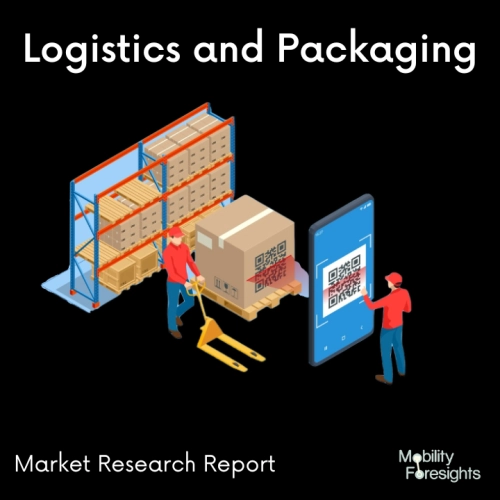
- Get in Touch with Us

Last Updated: Apr 25, 2025 | Study Period: 2023-2030
Equipment that moves, stores, controls, and protects materials, goods, and products during the production, distribution, consumption, and disposal processes is known as material handling equipment.Transport equipment, positioning equipment, unit load formation equipment, and storage equipment are the four broad categories into which the many types of equipment can be divided.
By making things simple to locate, move, and ship, material handling may enhance customer service, minimise costs by shortening the time it takes to move products, and prevent product damage by handling products properly. Additionally, it guarantees enhanced safety from both long-term and short-term disabilities.
For many businesses that need to handle and store bulk materials, material handling equipment and systems are essential. Equipment meant to move, regulate, protect, or store material via various processes at warehouses and facilities is generally referred to as material handling equipment.
This equipment is incredibly adaptable and is utilised in a wide range of industries. By being more knowledgeable about material handling machinery, you'll be able to properly outfit your facility with the systems and machinery that your business requires.

The Malaysia material handling equipment market accounted for $XX Billion in 2022 and is anticipated to reach $XX Billion by 2030, registering a CAGR of XX% from 2023 to 2030.
Sustainable Automated Warehouse Material Handling Equipment Adoption Motives in Malaysia.This conceptual work intends to present a conceptual model that explains the drivers behind the adoption of warehouse automated material handling equipment (AWMHE) in Malaysia in the quest of sustainable industrial growth.
An AWMHE conceptual model was constructed by a thorough analysis of the existing literature, contextual synthesis, and application of the TOE framework as the underlying idea. Five reasons for adopting AWMHE were found, including perceived reliability, advantages, cost, outside pressure, and management support.In the field of warehouse management, in particular, this might be used as a platform.
Additionally, this model may be able to offer Malaysian warehouse providers important information on the necessity of implementing AWMHE operations. There are currently few studies employing the TOE framework on the implementation of AWMHE in Malaysia. As a result, they might add to the body of knowledge already accumulated on AWMHE and provide useful data for academics and professionals.
| 1 | Market Segmentation |
| 2 | Scope of the report |
| 3 | Abbreviations |
| 4 | Research Methodology |
| 5 | Executive Summary |
| 6 | Introduction |
| 7 | Insights from Industry stakeholders |
| 8 | Cost breakdown of Product by sub-components and average profit margin |
| 9 | Disruptive innovation in the Industry |
| 10 | Technology trends in the Industry |
| 11 | Consumer trends in the industry |
| 12 | Recent Production Milestones |
| 13 | Component Manufacturing in US, EU and China |
| 14 | COVID-19 impact on overall market |
| 15 | COVID-19 impact on Production of components |
| 16 | COVID-19 impact on Point of sale |
| 17 | Market Segmentation, Dynamics and Forecast by Geography, 2023-2030 |
| 18 | Market Segmentation, Dynamics and Forecast by Product Type, 2023-2030 |
| 19 | Market Segmentation, Dynamics and Forecast by Application, 2023-2030 |
| 20 | Market Segmentation, Dynamics and Forecast by End use, 2023-2030 |
| 21 | Product installation rate by OEM, 2023 |
| 22 | Incline/Decline in Average B-2-B selling price in past 5 years |
| 23 | Competition from substitute products |
| 24 | Gross margin and average profitability of suppliers |
| 25 | New product development in past 12 months |
| 26 | M&A in past 12 months |
| 27 | Growth strategy of leading players |
| 28 | Market share of vendors, 2023 |
| 29 | Company Profiles |
| 30 | Unmet needs and opportunity for new suppliers |
| 31 | Conclusion |
| 32 | Appendix |